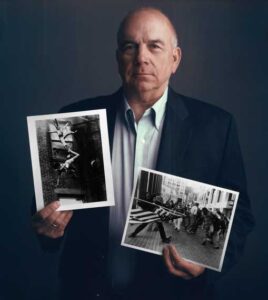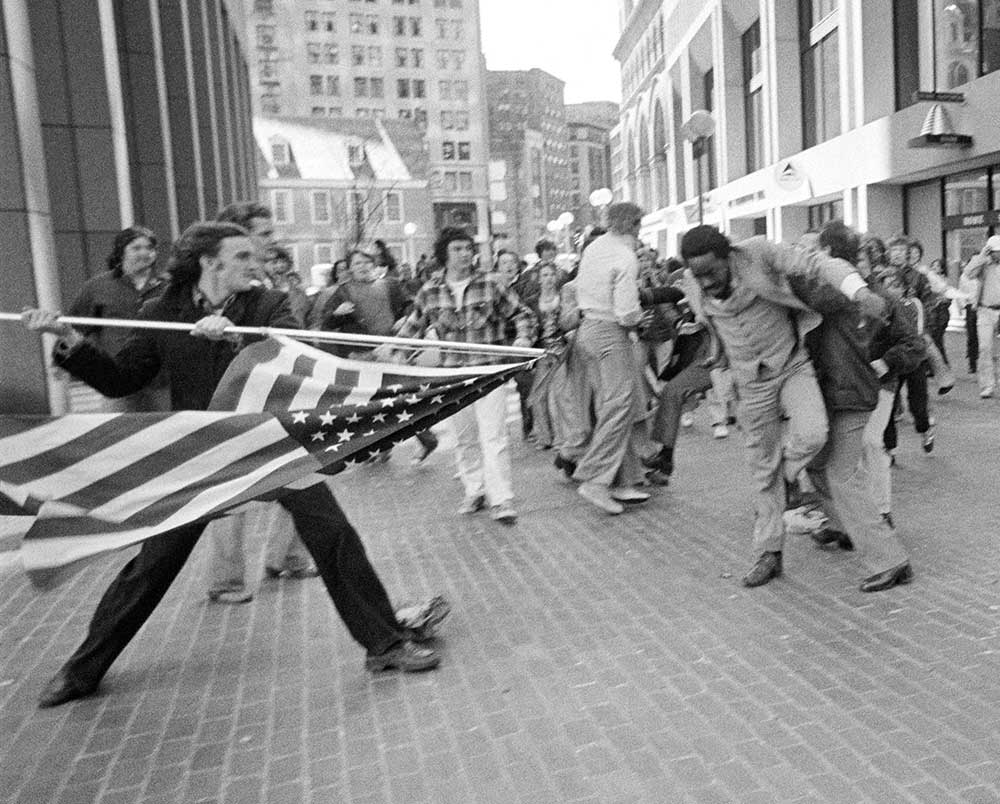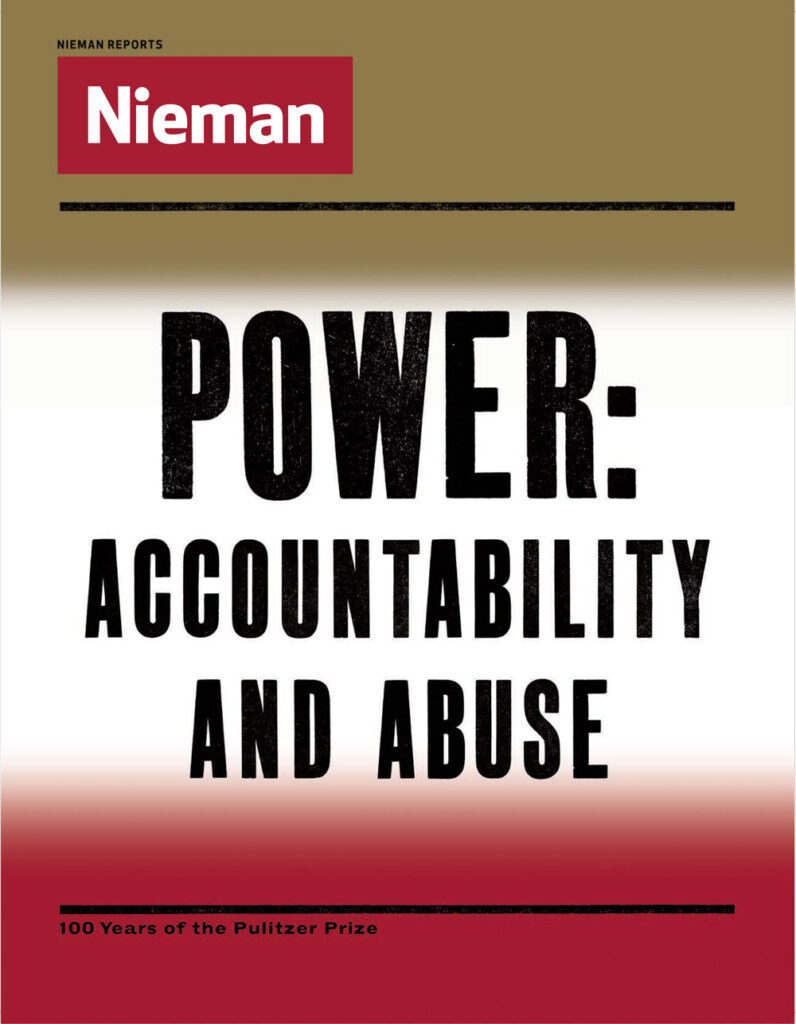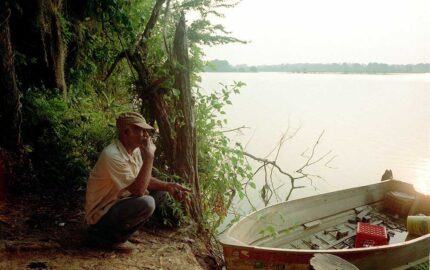Forman won the Pulitzer for Spot News Photography two years in a row, the second time, in 1977, for “The Soiling of Old Glory.” In a recent interview, he talks about the photo—taken at a demonstration against court-ordered desegregation busing in Boston—one that captures a defining moment of race relations in America.
It was an ugly time in Boston, an ugly time in the country, and anti-busing demonstrations were commonplace. The day I captured that photo started with a routine question and a routine answer. I got into the office early and asked the city editor what was going on. He said there was an anti-busing demonstration outside City Hall so, I asked if I could go. After running an errand, I headed over to the plaza.

As I arrived, some anti-busing demonstrators were coming out of the building following a meeting with City Councilor Louise Day Hicks, a staunch opponent to court-ordered busing and school desegregation. At the same time, a group of black students was getting ready to go on a tour of City Hall, and the two groups got into a scuffle on the steps. As some of them moved away from the courthouse, Ted Landsmark, a black attorney on his way to a meeting, happened to be caught in the melee and was assaulted by Joseph Rakes, a white teenager participating in the demonstration. Rakes used the flag he was carrying as a weapon, a moment I captured on film.
The photo is misleading. Rakes looks like he is using the flag as a lance, and that Landsmark is being held by another man as a target, but Rakes wasn’t trying to stab the attorney. He was swinging the pole, and the other man was actually trying to get Landsmark out of harm’s way. It is nonetheless a racially charged photo, whites attacking blacks. But I had no clue I had gotten such a powerful shot.
Police broke up the fighting, and the anti-busing demonstrators made their way through downtown. I stayed with them, not realizing the magnitude of the altercation at City Hall until a reporter came up to me and asked if I had heard what happened. I told him I had been there taking photos, and he exclaimed, “What? They’re going crazy! Get to the office.”
I think “The Soiling of Old Glory” would have had a greater impact today. If there’s a shot like that nowadays, it could start a riot. Rakes would have gone to jail. I’d be afraid to have taken it.




